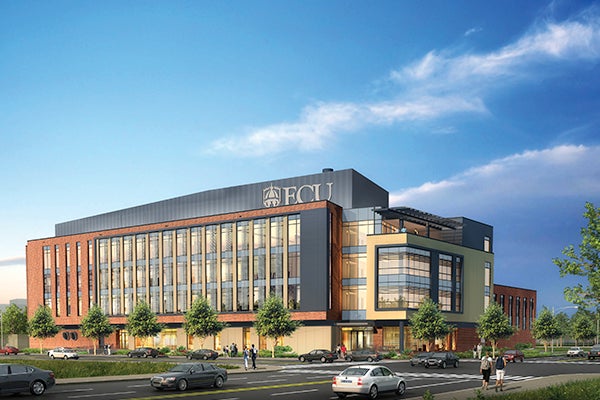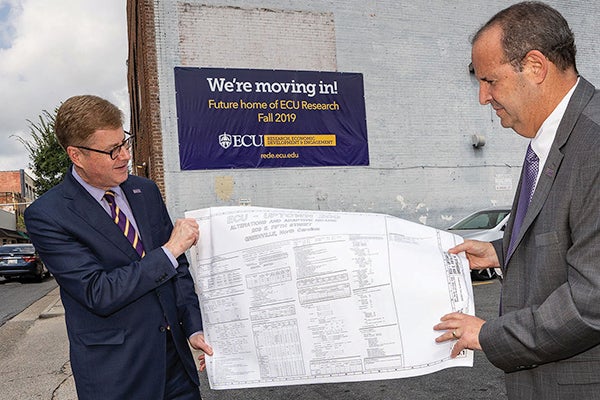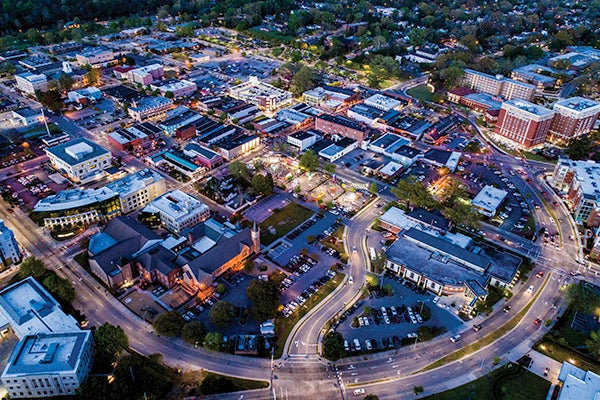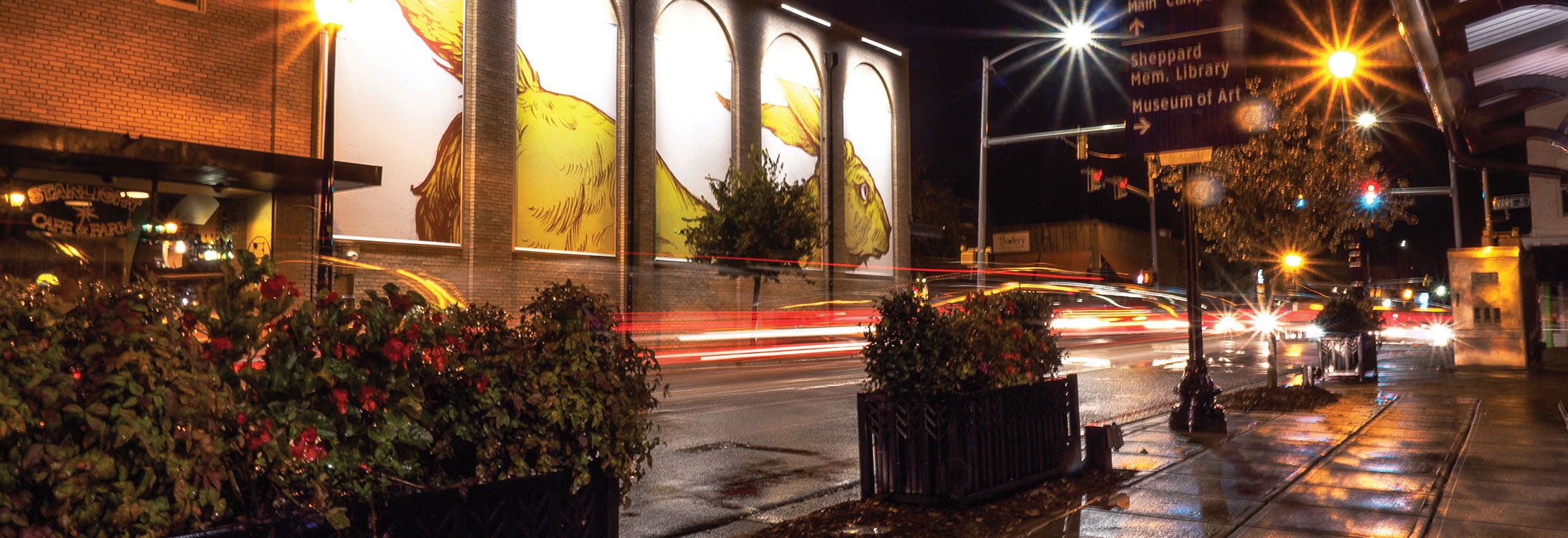Strategy for success
Growth and development will transform Greenville

Above is an artist’s concept of the new ECU Life Sciences and Biotechnology Building to be built near the corner of Evans and 10th streets.
People are used to Greenville growing. Why, Greenville Boulevard used to be a dirt road.
But the primary places you see dirt now are at the dozens of construction sites in the area, where new roads, homes and businesses are being built on past prosperity while creating more.
Projections say the population in the Greenville metropolitan area will grow to more than 185,000 by 2021, up from 177,788 in 2016. Median household income is expected to grow by about $1,000, to $41,255. Median home values are projected to climb to nearly $182,000. Across the city, target areas for new business recruitment are high-value offices/headquarters; artisanal manufacturing (the production of quality “craft” products, such as The Hammock Source); health care information technology and digital media/ software/simulation – fields that are seeing strong growth and are expected to be adding or moving operational sites during the next five to 10 years, according to the city’s 2020 Economic Development Plan (available online at bit.ly/2E4tRmG).
More than 10,000 workers commute to the Greenville area every day. And Greenville Utilities has developed the water and sewer capacity to support significant growth.
All those factors, along with the presence of ECU and Pitt Community College, make Greenville an attractive location to businesses looking to get started, move or expand, said Wanda Yuhas ’75, executive director of the Pitt County Development Commission.

Chancellor Cecil Staton and Jay Golden, vice chancellor for research, economic development and engagement, hold up plans for the refurbishment of the Fifth Street building that will be the new home for ECU research offices. Photo by Cliff Hollis.
“It’s made a difference with the kind of industry we recruit,” she said. “It’s made a difference with young professionals because with their degrees they can stay in the area.” She added that ECU works with businesses to create specialized education or certification programs for their employees. Pitt Community College does the same.
Uptown has been one of the fastest-growing spots in terms of business and residential development. In the last three years, the uptown/Dickinson Avenue core has attracted more than $500 million (built or in the pipeline) in new private investment, according to the city. With the addition of new housing, residency in uptown Greenville is projected to increase by 400 percent, with more than 2,600 people living there by the end of this year – up from 545 in 2015.
Restaurant owner Brandon Qualls hopes the residency increase will lead to more weekday revenue.
“It’s amazing to see on a Wednesday night, just the amount of people down here,” Qualls told WNCT Channel 9 in July. “The economic impact of having that many beds down here, it makes you excited for the future and what else is coming.”
ECU is also carrying out its own redevelopment efforts uptown. The university is building its Life Sciences and Biotechnology Building near the intersection of 10th and Evans streets, which will serve as a gateway to campus along the new 10th Street connector. It’s developing its Millennial Campus in the warehouse district. And the Division of Research, Economic Development and Engagement will move to 209 E. Fifth St. in the fall – to the building that formerly housed the popular Attic nightclub. “We are committed to partnering with city and business leaders to grow Greenville into a model college town,” ECU Chancellor Cecil Staton said in August.

An aerial view of uptown Greenville.
During the next five years, ECU will construct nearly 210,000 square feet of new office and institutional space in the uptown district. The city is also looking for ideas for launching a restaurant/event space on the Town Common on a 1.46-acre tract where a radio antenna used to be.
Due to federal grants used to create the park, that’s the only area that can be developed commercially, said Christian Lockamy, who spent 15 years in the city’s planning and economic development office. But he sees commercial development taking place on the opposite side of First Street in about 10 years, due to current lease contracts. Public-private partnerships will drive much of that, as it has across the uptown area, he said.
Leo Corbin, president of the Greenville-Pitt County Chamber of Commerce, agreed. “I do think there’s a large opportunity through that corridor … just south of First Street,” he said. “I can envision that block, two-block area being repurposed and having something cool there.”
Such changes could remake Greenville yet again.
“If we think we’ve seen change in the last 15 years, the next 15 are going to be incredible,” said Yuhas. “It’s a good time to be here.”
